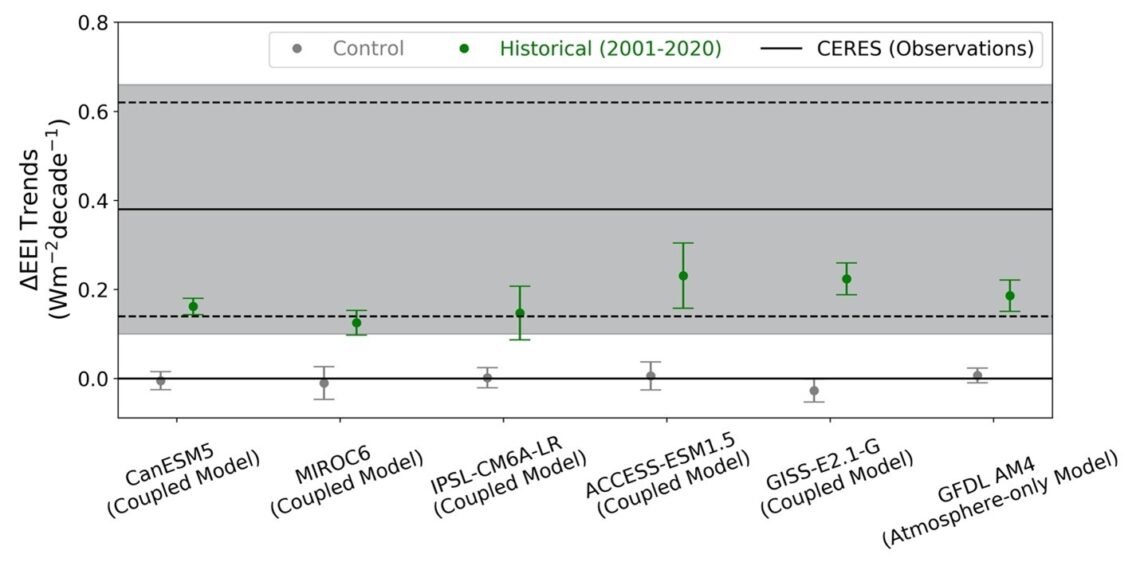July 28th, 2021
Key Findings
- It is exceptionally unlikely (< 1% probability) that the satellite-observed trend in Earth’s energy imbalance can be explained by natural variations in the climate system alone.
- This trend is achieved only upon accounting for the increase in anthropogenic radiative forcing and the associated climate response.
- The probable anthropogenic contribution to the observed trend is 65%-135% (66% confidence interval; 30%-170% for 95% confidence interval).
- Increases in greenhouse gases, decreases in aerosols, and decreases in polar sea-ice were major contributors to the trapping of more heat on the planet during 2001-2020
Shiv Priyam Raghuraman, David Paynter, V. Ramaswamy. Nature Communications. DOI: 10.1038/s41467-021-24544-4
The observed trend in Earth’s energy imbalance, a measure of the acceleration of heat uptake by the planet, is a fundamental indicator of perturbations to climate. The study found that it is exceptionally unlikely (< 1% probability) that this observed trend can be explained by natural variations in the climate system alone. Using climate model simulations and by conducting a hierarchy of GFDL CM4/AM4 experiments, the authors estimated the anthropogenic and internal variability contributions to the observed trend during 2001-2020. The study concludes that the satellite record provides clear evidence of a human-influenced climate system.
The authors show that anthropogenic forcing and the associated climate response yield the significant positive globally-averaged observed trend. This trend is driven by a large decrease in reflected solar radiation and a small increase in emitted infrared radiation. This is because recent changes in forcing and feedbacks are additive in the solar spectrum, while being nearly offset by each other in the infrared.
A positive Earth’s energy imbalance manifests as many symptoms across the Earth system that impact society: increases in temperature, sea levels, flooding, droughts, and extreme events. This study increases confidence in the causes of the increase in Earth’s energy imbalance: anthropogenic activities. Knowing that human activity is responsible for the acceleration of planetary heat uptake implies the need for significant societal action to curb further increases in Earth’s energy imbalance.



